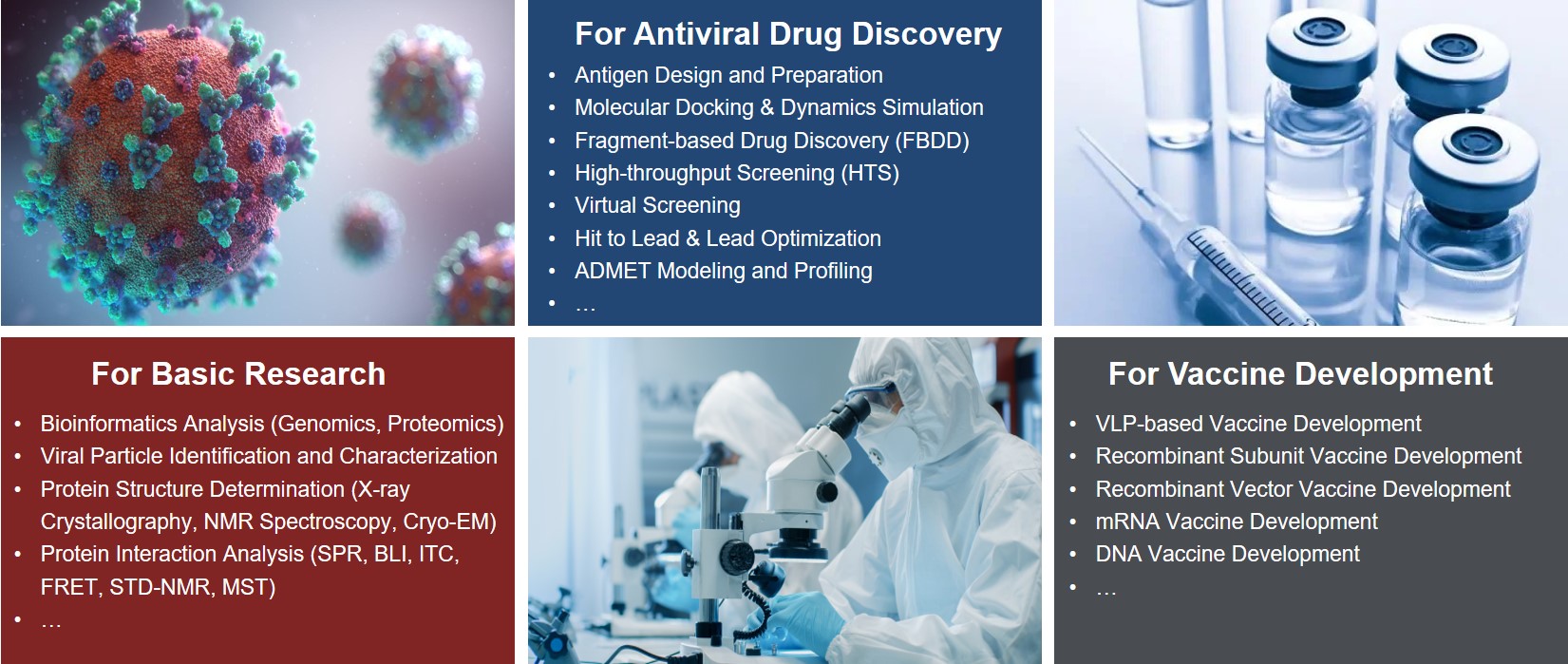Based on the analysis of genome-wide sequence evolution, coronaviruses are classified into four genera, including α-coronavirus, β-coronavirus, γ-coronavirus, and δ-coronavirus, among which β-coronavirus is divided into four lineages (A, B, C, D). The coronavirus families that infect humans are mainly as follows: HCoV-229E, HCoV-NL63, HCoV-OC43, HCoV-HKU1, SARS-CoV, MERS-CoV, and SARS-CoV-2. They can infect the respiratory system, gastrointestinal tract, liver, and central nervous system of humans, livestock, and many other wild animals. The coronaviruses that are pathogenic to humans are mainly concentrated in the genus β-coronavirus. Since the 21st century, three main types of coronaviruses have caused outbreaks in humans. They are severe acute respiratory syndrome coronavirus (SARS-CoV), the Middle East respiratory syndrome coronavirus (MERS-CoV), and the pathogen of COVID-19 (SARS-CoV-2). They all can cause pneumonia, and even severe pneumonia, and can spread from person to person. Outbreaks of human pathogenic coronaviruses have caused immeasurable harm to human health and the global economy. It is currently a major problem in world public health.
Brief Review of SARS-CoV
SARS-CoV belongs to β-coronavirus lineage B. Its morphological structure is similar to that of classical coronavirus. The viral genome is 29.7 kb in length, including 14 potential open reading frames (ORFs), which encoding proteins consistent with other known coronaviruses such as replicases, structural proteins, and eight specific accessory proteins. Studies have shown that SARS-CoV comes from the Rhinolophus sinicus, and some SARS-like coronaviruses may infect humans directly without passing through an intermediate host.
The SARS pneumonia caused by SARS-CoV was first reported in Asia in February 2003. The disease spread to many countries in North America, South America, Europe, and Asia before the global outbreak of SARS was contained in 2003. Since 2004, there have been no known cases of SARS in the world. The SARS epidemic affected 32 countries and territories in 2003 and caused more than 8,000 cases. The SARS pneumonia is mainly concentrated in winter and spring. Diabetes and heart disease are important risk factors for the death of SARS patients. Patients with SARS mainly present with fever, cough, progressive dyspnea and hypoxemia; In severe cases, they develop acute respiratory distress syndrome. Laboratory tests typically show decreased lymphocyte counts and abnormal liver function. Patients may die of rapidly progressive respiratory failure due to alveolar damage. The treatment is mainly based on symptomatic support, so far, no specific antiviral drugs have been proved to be effective in treating SARS-CoV infection.
Contract Research Services for Coronavirus Infections
As a leading contract service vendor in the field of structural biology and structure-based drug discovery, Creative Biostructure has rapidly established a scientific team dedicated to providing basic research and preclinical research services related to coronavirus research in the face of the SARS-CoV-2 global epidemic. The following is a list of our featured services:
 Figure 1. Our contract research services for coronavirus infections.
Figure 1. Our contract research services for coronavirus infections.
Contact us to discuss your project!
References
- Drosten C.; et al. Identification of a novel coronavirus in patients with severe acute respiratory syndrome. New England Journal of Medicine. 2003, 348(20): 1967-1976.
- Tan Y J, Lim S G, Hong W. Understanding the accessory viral proteins unique to the severe acute respiratory syndrome (SARS) coronavirus. Antiviral Research. 2006, 72(2): 78-88.
- Lu G, Wang Q, Gao G F. Bat-to-human: spike features determining ‘host jump’of coronaviruses SARS-CoV, MERS-CoV, and beyond. Trends in Microbiology. 2015, 23(8): 468-478.

 Figure 1. Our contract research services for coronavirus infections.
Figure 1. Our contract research services for coronavirus infections.